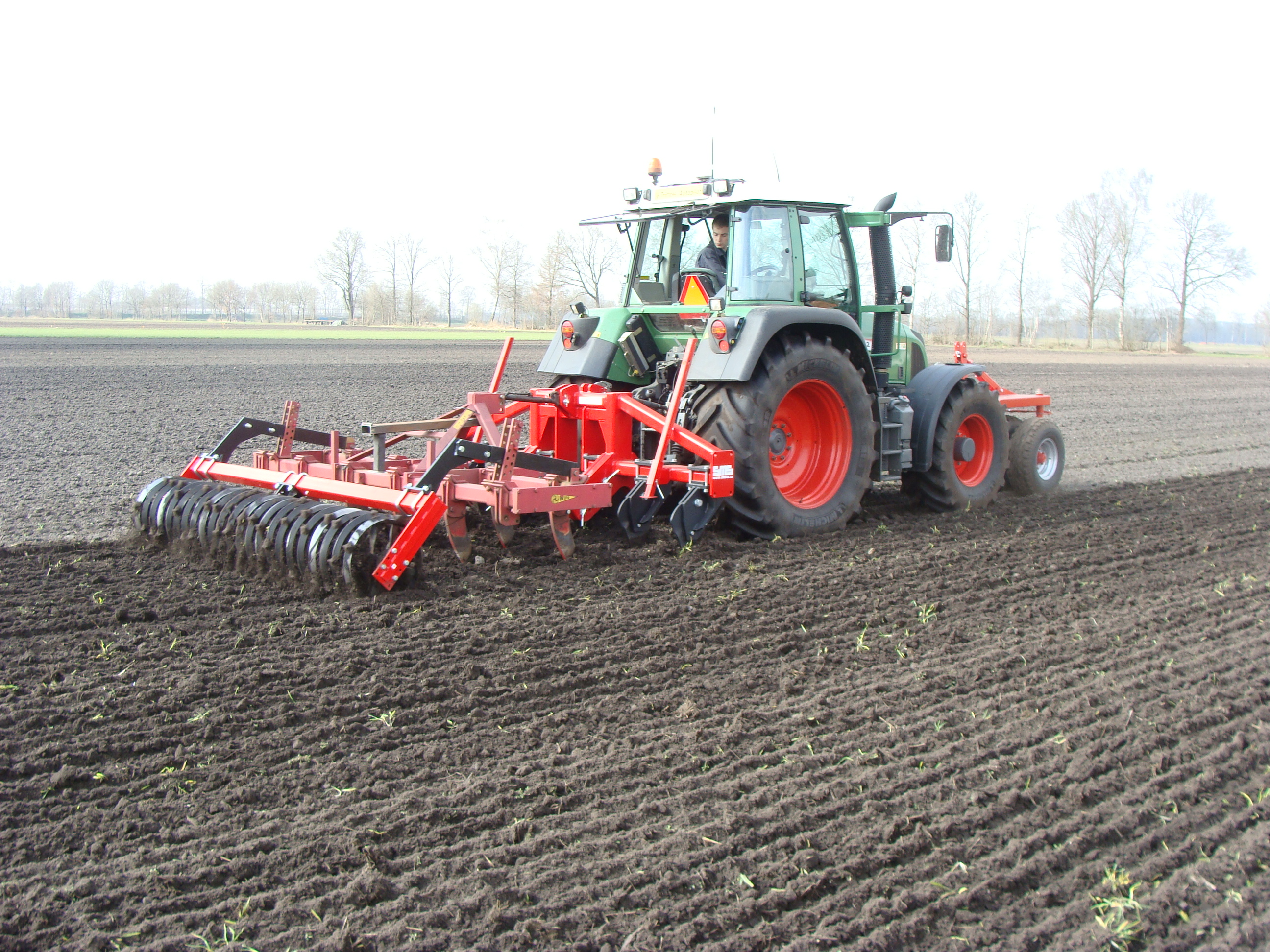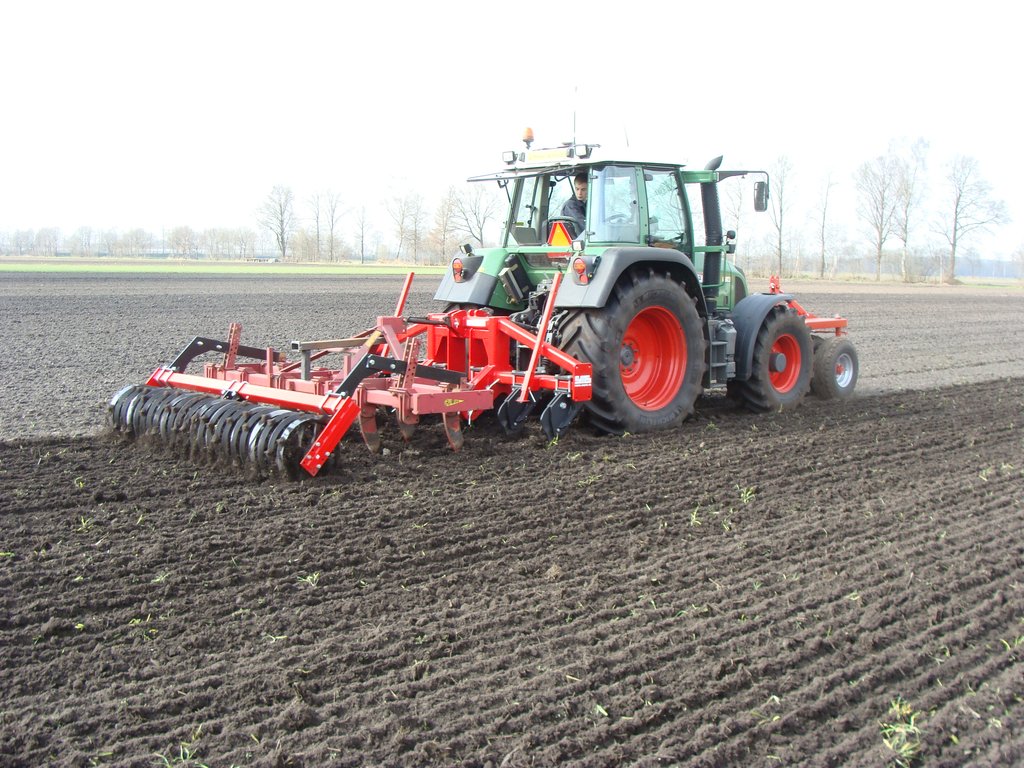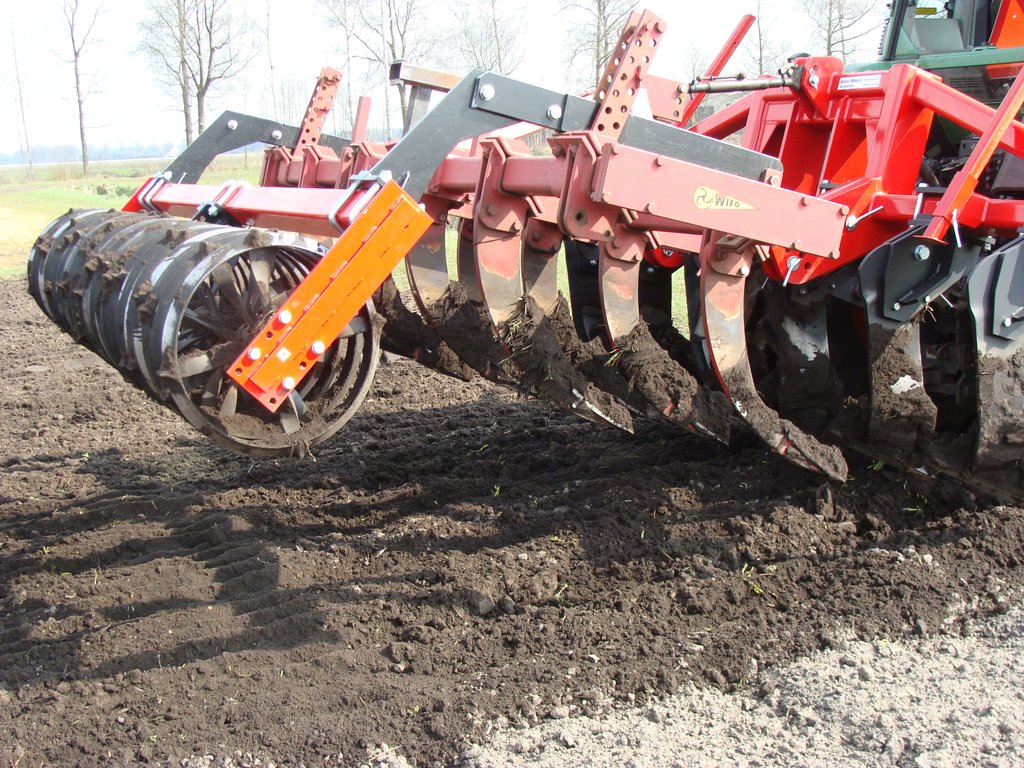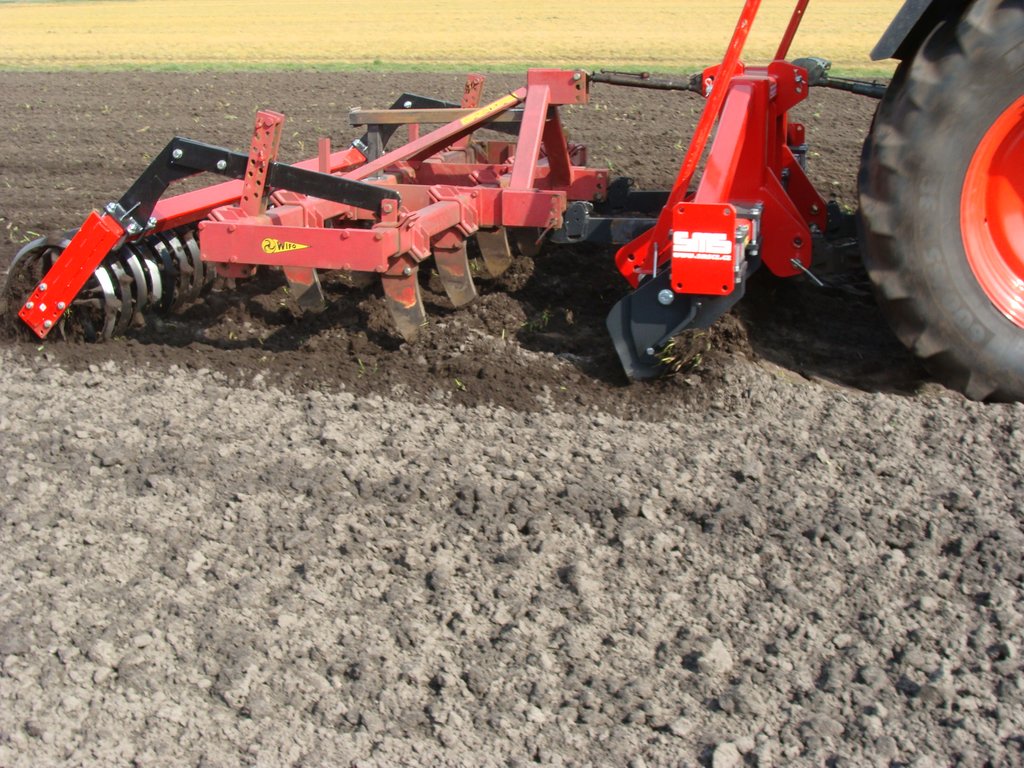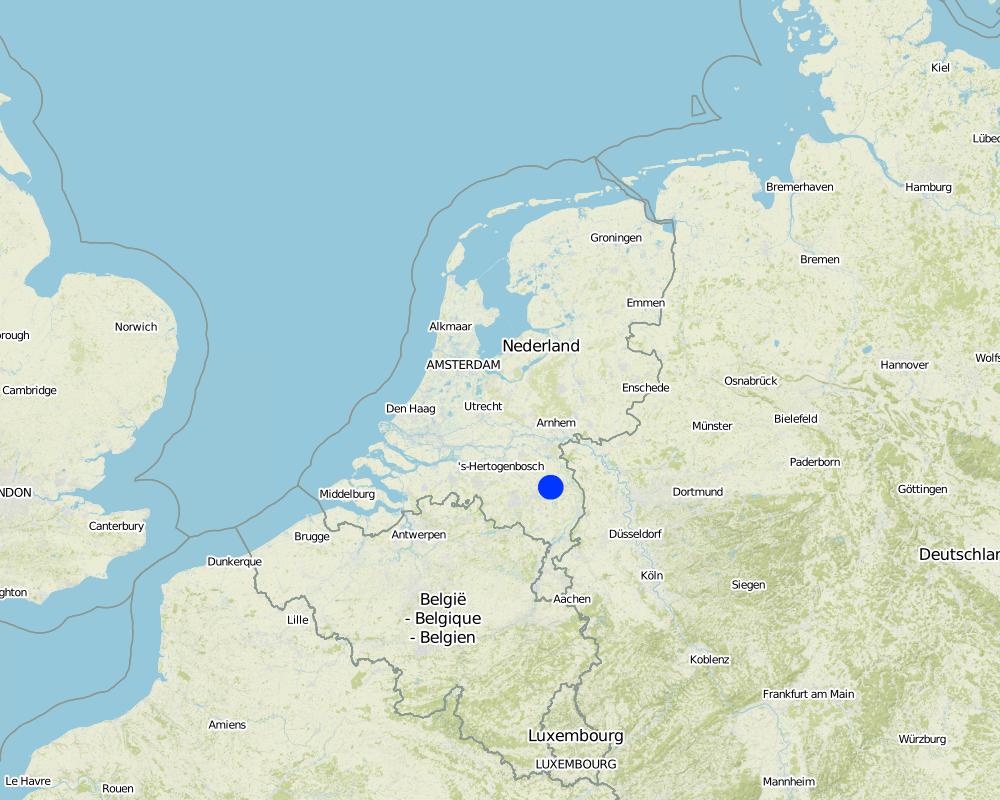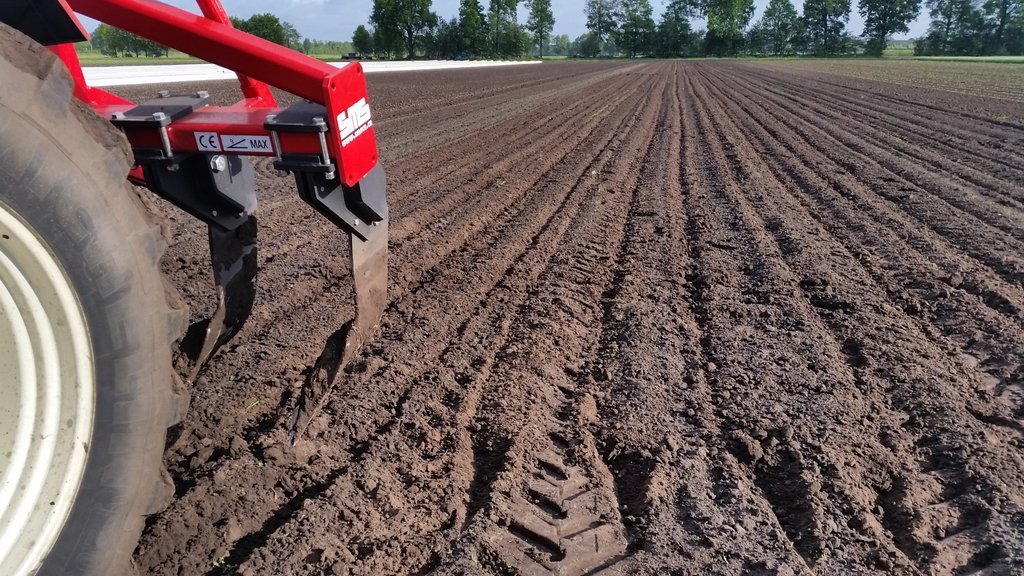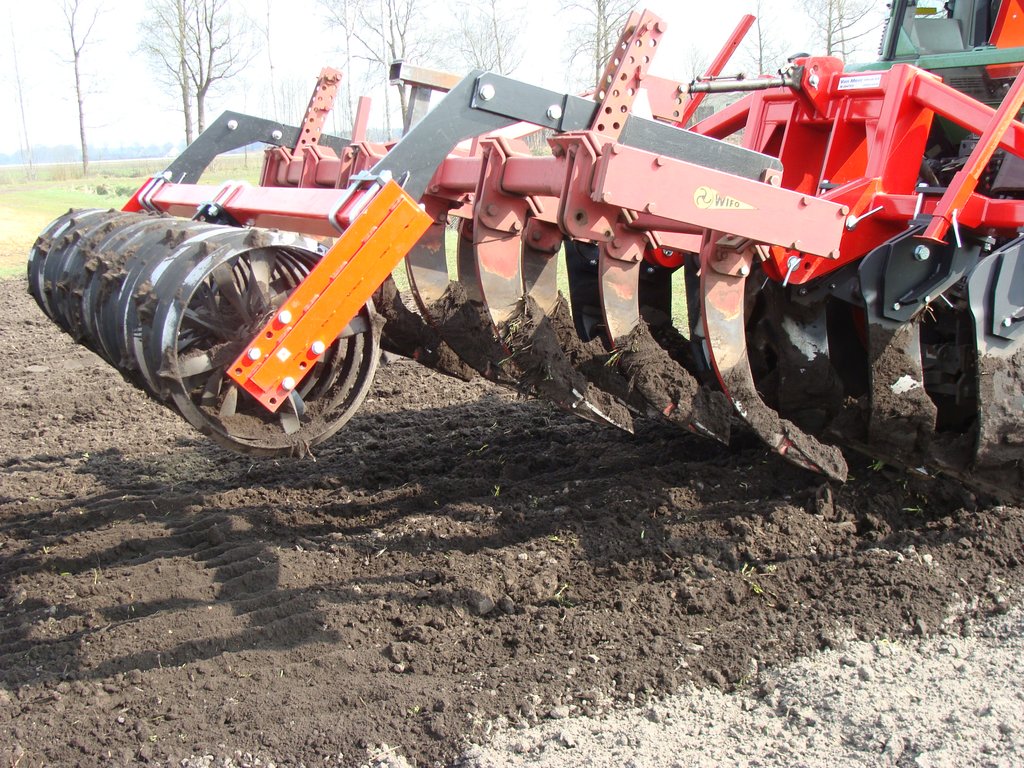Non-inversion shallow tillage on sandy soils in the Netherlands [Netherlands]
- Creation:
- Update:
- Compiler: wijnand sukkel
- Editor: Marie Wesselink
- Reviewers: Ursula Gaemperli, Gudrun Schwilch, Alexandra Gavilano
Niet kerende, ondiepe grondbewerking op zandgronden in Nederland
technologies_2958 - Netherlands
View sections
Expand all Collapse all1. General information
1.2 Contact details of resource persons and institutions involved in the assessment and documentation of the Technology
Name of project which facilitated the documentation/ evaluation of the Technology (if relevant)
Interactive Soil Quality assessment in Europe and China for Agricultural productivity and Environmental Resilience (EU-iSQAPER)Name of the institution(s) which facilitated the documentation/ evaluation of the Technology (if relevant)
Stichting Dienst Landbouwkundig Onderzoek, Wageningen University & Research Centre (DLO) - Netherlands1.3 Conditions regarding the use of data documented through WOCAT
The compiler and key resource person(s) accept the conditions regarding the use of data documented through WOCAT:
Ja
1.4 Declaration on sustainability of the described Technology
Is the Technology described here problematic with regard to land degradation, so that it cannot be declared a sustainable land management technology?
Nee
2. Description of the SLM Technology
2.1 Short description of the Technology
Definition of the Technology:
This technique can be applied in any crop rotation or soil. Tillage of the soils is done with special machines that do not turn over the soil (non-inversion), and the tillage depth can be more shallow than with conventional tillage (ploughing).
2.2 Detailed description of the Technology
Description:
This technology is applied in Vredepeel (the Netherlands) on a sandy soil on arable fields. The technology is not by environment limited to these conditions, it could for example be applied on clay soils as well. It is applicable for various crop types. The main point of this technology is the specific machine that is used to do the tillage. The machine is called a rigid-tine cultivator. The machine can be purchased for a few thousand Euros, but in the Netherlands it is also possible to let a contractor do this tillage. The average tillage depth here is around 25 cm, dependent on the crops in the rotation. The purpose of the shallow non-inversion tillage is to keep the soil organic matter in the topsoil, and to disturb the soil as little as possible, which has as benefit that the organic matter levels in the topsoil can increase and soil life is maintained better. Overall, the soil structure in the topsoil will improve. This is also what the land users like about using the non-inversion tillage. The yields when using non-inversion tillage are similar to the yields of ploughed fields. The difficulty of this technology is the control of weeds, since the topsoil is not turned over, small weeds and seeds are not buried, and have a higher change to survive. This may make that more pesticide is used to control the weeds than when you plough the soil, therefore this tillage technique is less favorable amongst organic farmers. Also when grasses are a (large) part of the crop rotation non-inversion tillage might not be the best solution, since it is harder to destroy the grass when preparing the soil for the next crop.
2.3 Photos of the Technology
2.5 Country/ region/ locations where the Technology has been applied and which are covered by this assessment
Country:
Netherlands
Region/ State/ Province:
de Peel
Further specification of location:
Vredepeel
Specify the spread of the Technology:
- evenly spread over an area
If precise area is not known, indicate approximate area covered:
- 100-1,000 km2
Comments:
About a quarter of the landowners in the region uses this technique
Map
×2.6 Date of implementation
Indicate year of implementation:
2012
2.7 Introduction of the Technology
Specify how the Technology was introduced:
- during experiments/ research
Comments (type of project, etc.):
Research results over the last years have shown that ploughing might not always be the perfect solution as tillage technique. By experimenting it is now found that non-inversion tillage might as well do the job, and even improve soil quality on certain points.
3. Classification of the SLM Technology
3.1 Main purpose(s) of the Technology
- reduce, prevent, restore land degradation
- preserve/ improve biodiversity
- adapt to climate change/ extremes and its impacts
3.2 Current land use type(s) where the Technology is applied

Cropland
- Annual cropping
Annual cropping - Specify crops:
- cereals - barley
- cereals - maize
- legumes and pulses - peas
- root/tuber crops - potatoes
- root/tuber crops - sugar beet
- vegetables - root vegetables (carrots, onions, beet, other)
Number of growing seasons per year:
- 1
Comments:
Main crops (cash and food crops): leek, silage maize, processing pea, carrot, spring barley, sugarbeet, potatoe
3.4 Water supply
Water supply for the land on which the Technology is applied:
- mixed rainfed-irrigated
3.5 SLM group to which the Technology belongs
- minimal soil disturbance
3.6 SLM measures comprising the Technology

agronomic measures
- A3: Soil surface treatment
3.7 Main types of land degradation addressed by the Technology

soil erosion by wind
- Et: loss of topsoil

chemical soil deterioration
- Cn: fertility decline and reduced organic matter content (not caused by erosion)

physical soil deterioration
- Pc: compaction

biological degradation
- Bl: loss of soil life
3.8 Prevention, reduction, or restoration of land degradation
Specify the goal of the Technology with regard to land degradation:
- prevent land degradation
- reduce land degradation
4. Technical specifications, implementation activities, inputs, and costs
4.1 Technical drawing of the Technology
Technical specifications (related to technical drawing):
The pictures show the machine at work, and what the soil looks like once the soil has been worked.
The machine type is SMS HKK 300, with 6 pins that work in the soil. Dependent on the type of crop the soil is worked about 25 cm deep.
Author:
Harry Verstegen
Date:
23/03/2015
4.2 General information regarding the calculation of inputs and costs
Specify how costs and inputs were calculated:
- per Technology area
Indicate size and area unit:
hectare
other/ national currency (specify):
Euro
If relevant, indicate exchange rate from USD to local currency (e.g. 1 USD = 79.9 Brazilian Real): 1 USD =:
0.87
Indicate average wage cost of hired labour per day:
160 euro
4.3 Establishment activities
| Activity | Timing (season) | |
|---|---|---|
| 1. | adapt tillage mechanisation |
4.4 Costs and inputs needed for establishment
| Specify input | Unit | Quantity | Costs per Unit | Total costs per input | % of costs borne by land users | |
|---|---|---|---|---|---|---|
| Equipment | adapted tillage machine | piece | 1.0 | 2000.0 | 2000.0 | 100.0 |
| Total costs for establishment of the Technology | 2000.0 | |||||
| Total costs for establishment of the Technology in USD | 2298.85 | |||||
4.5 Maintenance/ recurrent activities
| Activity | Timing/ frequency | |
|---|---|---|
| 1. | destruction of cover crops after winter | once per year |
| 2. | one additional tillage operation instead of ploughing | once per year |
Comments:
the described operations are the changes compared to conventional tillage which is ploughing
4.6 Costs and inputs needed for maintenance/ recurrent activities (per year)
Comments:
There are no additional costs for inputs compared to conventional tillage (ploughing in spring). There might be a minor reduction of fuel costs because the ploughing of a field takes more fuel, but on the other hand it is sometimes needed to cultivate the land an extra time, because you cannot destroy the winter crop/green manure at once. So in the end it will be around the same.
4.7 Most important factors affecting the costs
Describe the most determinate factors affecting the costs:
The investment costs for adapted machinery are the main factors affecting costs.
5. Natural and human environment
5.1 Climate
Annual rainfall
- < 250 mm
- 251-500 mm
- 501-750 mm
- 751-1,000 mm
- 1,001-1,500 mm
- 1,501-2,000 mm
- 2,001-3,000 mm
- 3,001-4,000 mm
- > 4,000 mm
Specify average annual rainfall (if known), in mm:
850.00
Indicate the name of the reference meteorological station considered:
volkel the Netherlands
Agro-climatic zone
- sub-humid
5.2 Topography
Slopes on average:
- flat (0-2%)
- gentle (3-5%)
- moderate (6-10%)
- rolling (11-15%)
- hilly (16-30%)
- steep (31-60%)
- very steep (>60%)
Landforms:
- plateau/plains
- ridges
- mountain slopes
- hill slopes
- footslopes
- valley floors
Altitudinal zone:
- 0-100 m a.s.l.
- 101-500 m a.s.l.
- 501-1,000 m a.s.l.
- 1,001-1,500 m a.s.l.
- 1,501-2,000 m a.s.l.
- 2,001-2,500 m a.s.l.
- 2,501-3,000 m a.s.l.
- 3,001-4,000 m a.s.l.
- > 4,000 m a.s.l.
Indicate if the Technology is specifically applied in:
- not relevant
5.3 Soils
Soil depth on average:
- very shallow (0-20 cm)
- shallow (21-50 cm)
- moderately deep (51-80 cm)
- deep (81-120 cm)
- very deep (> 120 cm)
Soil texture (topsoil):
- coarse/ light (sandy)
Soil texture (> 20 cm below surface):
- coarse/ light (sandy)
Topsoil organic matter:
- high (>3%)
If available, attach full soil description or specify the available information, e.g. soil type, soil PH/ acidity, Cation Exchange Capacity, nitrogen, salinity etc.
antroposol/gleyic podsol; sand to sandy loam with an organic matter content of approx 4%.
5.4 Water availability and quality
Ground water table:
< 5 m
Availability of surface water:
good
Water quality (untreated):
for agricultural use only (irrigation)
Is water salinity a problem?
Nee
Is flooding of the area occurring?
Nee
5.5 Biodiversity
Species diversity:
- medium
Habitat diversity:
- medium
5.6 Characteristics of land users applying the Technology
Sedentary or nomadic:
- Sedentary
Market orientation of production system:
- commercial/ market
Off-farm income:
- less than 10% of all income
Relative level of wealth:
- rich
Individuals or groups:
- individual/ household
Level of mechanization:
- mechanized/ motorized
Gender:
- men
Age of land users:
- middle-aged
5.7 Average area of land used by land users applying the Technology
- < 0.5 ha
- 0.5-1 ha
- 1-2 ha
- 2-5 ha
- 5-15 ha
- 15-50 ha
- 50-100 ha
- 100-500 ha
- 500-1,000 ha
- 1,000-10,000 ha
- > 10,000 ha
Is this considered small-, medium- or large-scale (referring to local context)?
- medium-scale
5.8 Land ownership, land use rights, and water use rights
Land ownership:
- company
Land use rights:
- individual
Water use rights:
- communal (organized)
5.9 Access to services and infrastructure
health:
- poor
- moderate
- good
education:
- poor
- moderate
- good
technical assistance:
- poor
- moderate
- good
employment (e.g. off-farm):
- poor
- moderate
- good
markets:
- poor
- moderate
- good
energy:
- poor
- moderate
- good
roads and transport:
- poor
- moderate
- good
drinking water and sanitation:
- poor
- moderate
- good
financial services:
- poor
- moderate
- good
6. Impacts and concluding statements
6.1 On-site impacts the Technology has shown
Socio-economic impacts
Production
crop production
Comments/ specify:
The fields with non-inversion tillage and conventional ploughing are right next to each other, and with the same crops, no effects on crop production were found.
crop quality
Comments/ specify:
The fields with non-inversion tillage and conventional ploughing are right next to each other, and with the same crops, no effects on crop quality were found.
Income and costs
expenses on agricultural inputs
Comments/ specify:
More shallow tillage needs less power from the machines, but on the other hand more tillage operations to destroy the crop.
Ecological impacts
Water cycle/ runoff
surface runoff
Comments/ specify:
Since the soil structure will improve, the infiltration capacity of the soil also improves.
Soil
soil organic matter/ below ground C
Comments/ specify:
Expectations are that soil organic matter content in the (top) soil will increase, but so far no significant results were found on that.
Biodiversity: vegetation, animals
beneficial species
Comments/ specify:
In general soil biodiversity increased, mainly fungal biomass and bacterial biomass.
6.2 Off-site impacts the Technology has shown
Specify assessment of off-site impacts (measurements):
The technology is running too short still to measure impacts
6.3 Exposure and sensitivity of the Technology to gradual climate change and climate-related extremes/ disasters (as perceived by land users)
Climate-related extremes (disasters)
Meteorological disasters
| How does the Technology cope with it? | |
|---|---|
| local rainstorm | well |
6.4 Cost-benefit analysis
How do the benefits compare with the establishment costs (from land users’ perspective)?
Short-term returns:
slightly negative
Long-term returns:
neutral/ balanced
How do the benefits compare with the maintenance/ recurrent costs (from land users' perspective)?
Short-term returns:
neutral/ balanced
Long-term returns:
neutral/ balanced
6.5 Adoption of the Technology
- single cases/ experimental
Of all those who have adopted the Technology, how many did so spontaneously, i.e. without receiving any material incentives/ payments?
- 91-100%
6.6 Adaptation
Has the Technology been modified recently to adapt to changing conditions?
Nee
6.7 Strengths/ advantages/ opportunities of the Technology
| Strengths/ advantages/ opportunities in the land user’s view |
|---|
| The technology has been used for 5 years now. Yield were expected to decrease but did not. |
| There is a minor advantage in fuel costs, however this is compensated with additional labour needed. |
| Carbon stratification (higher content in the topsoil (0-15 cm)) was expected to change but did only minorly. |
| Water infiltration and topsoil protection is still expected to improve. |
| Strengths/ advantages/ opportunities in the compiler’s or other key resource person’s view |
|---|
| Higher soil biodiversity |
| On the long term increased carbon sequestration |
| Better top soil protection against acces of rainfall, improved infiltration and water holding capacity. Improved drought resistance |
6.8 Weaknesses/ disadvantages/ risks of the Technology and ways of overcoming them
| Weaknesses/ disadvantages/ risks in the land user’s view | How can they be overcome? |
|---|---|
| The change in tillage is effecting various other agronomic activities which need to be adapted. | building up of experience |
| There is a higher weed pressure | improved mechanical/chemical weed control. Maybe the weed pressure will stabilize the coming years |
| Problems with destroying cover crops | development of new techniques to destroy the cover crop |
| Weaknesses/ disadvantages/ risks in the compiler’s or other key resource person’s view | How can they be overcome? |
|---|---|
| It takes a long period until effects are measurable, this makes it hard to convince farmers. | longt term monitoring |
| Very little practical experience with non inversion tillage in the Netherlands | communication and exchange experiences |
7. References and links
7.1 Methods/ sources of information
- field visits, field surveys
On our experimental farm we have fields with non-inversion tillage, all the research data gathered there gives more information on this technology.
- interviews with land users
the landowner, involved researcher and some of the landworkers were consulted.
- compilation from reports and other existing documentation
As said, from our research farm much data is gathered, and reports/documentations are available
When were the data compiled (in the field)?
19/07/2017
7.3 Links to relevant online information
Title/ description:
website Beter Bodembeheer
URL:
www.beterbodembeheer.nl
Links and modules
Expand all Collapse allLinks
No links
Modules
No modules


